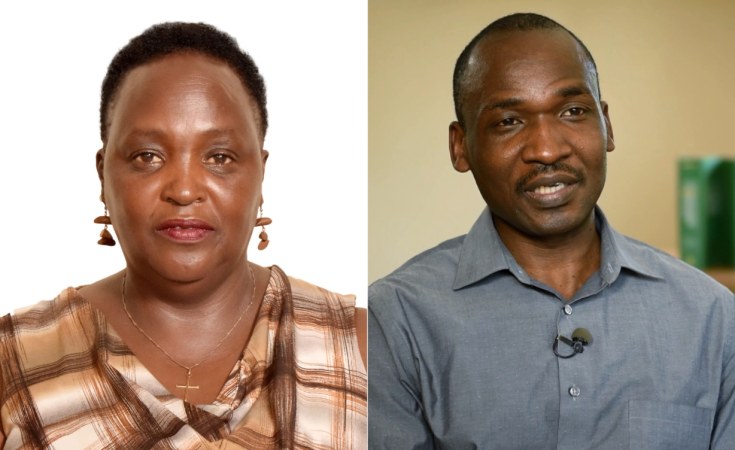We write as two doctors deeply frustrated by the failure of our continent to save more children and babies. We both work in East Africa, one at an international pharmaceutical company, Novartis, and the other in Kisumu County as a paediatrician. We both see too many African children still die before their fifth birthdays from diseases that are preventable and treatable.
Independence, better medicines and improvements in infrastructure have all made a difference: in 1960, about one in four Tanzanian and Ugandan children died before their fifth birthdays. Today, it is one in twenty. Kenya had a slightly better ratio then and still has today. But, over the same period, the death rate in Sweden has gone from one in 50 toddlers to one in more than three hundred.
Youth is Africa's great gift to an ageing world but even the children who survive are not contributing as much as they could to the African century. Too many of them grow up with lifelong limitations brought about by childhood diseases and malnutrition that could have been prevented or treated.
When African children survive birth, they are most likely to die from one of the three big child killers: malaria, diarrhoea, or pneumonia. Child-friendly treatments already exist for malaria and pneumonia, and companies and the scientific community are working on research into new medicines for all three diseases.
Yet, scientific efforts are not enough: too many children never get access to medical care. A recent study, which pooled data from 33 African countries, estimated that only about twenty percent of children with a malaria-induced fever receive the right treatment. Those who get it are often given crushed-up bitter pills that they spit out, instead of those child-friendly malaria formulations that Novartis researchers and expert African doctors worked so hard to develop. Last year, Kenya introduced child-friendly, dispersible amoxicillin tablets to help treat pneumonia in children – they will come to Tanzania and Uganda over the next year – let us hope they get used widely.
The problems in treatment are indeed seen most starkly when we look at the growing threat of respiratory illnesses. Some children have always had asthma but it has become much more common as more and more children now live in urban areas. In cities, the mites that trigger asthma thrive and the pollution makes it worse. Yet, in a 2013 study, 95 percent of the children with asthma who were seen at Uganda's major referral hospital had previously received a prescription for antibiotics. It means that a nurse or doctor had wrongly diagnosed asthma as breathing difficulties related to a bacterial infection. As doctors, we have both seen exactly the same pattern of asthma being treated with useless, repeated prescriptions for antibiotics or cough medicines.
Research from Boston University (BU), commissioned by Novartis and published in the International Journal of Tuberculosis and Lung Disease last month, shows that patients diagnosed with asthma in Kenya often don't have the treatments they need to avoid attacks that may be life-threatening. Half of those in the study who knew they had asthma did not have medicines at home. Of those who did, many had tablets, not the inhalers recommended by international treatment guidelines.
From the BU study, we also know a lot about why this happens. Medicines for chronic diseases such as asthma are often out of stock in public facilities (where they are dispensed free of charge or at a minimal price to the patient) and too expensive when they are sold in pharmacies. The study showed that at the chemist, the poorest people were paying nearly twice as much for an asthma inhaler as the richest people and four times more than some middle-income patients.
Novartis is already working with faith-based providers in Kenya and Uganda to provide treatments against asthma and childhood pneumonia at very low prices, and will soon launch additional products. A key aspect of these efforts is to work with partners to ensure there are no irrational price disparities at the chemist but, again, our efforts alone will not be enough.
The theme of this year's Day of the African Child is "Leave No Child Behind in Africa's Development." Too often the children who are Africa's most precious resource are not at the centre of development strategies. That must change and we must all play our part.
Just imagine if all African children survived to be six years old. Not only would families rejoice and prosper together but our societies would gain extra scientists, teachers, poets, entrepreneurs and workers.
Without a new determination, we will always be running to stay still. We will finally overcome the infectious diseases that still kill so many of our children but we will lose them to growing threats such as asthma and diabetes. To stop this will take money, government action, a renewed commitment from health professionals, the countless efforts of faith groups, NGOs and companies. Most of all, though, it will require all of us to stop accepting a world where an African child is fifteen times as likely as a Swedish one to die before his fifth birthday.
Authors:
Dr Nathan Mulure - Novartis Social Business Cluster, Head East and Southern Africa
Dr Magdalene Kuria - Paediatrician, Kisumu, Kenya


